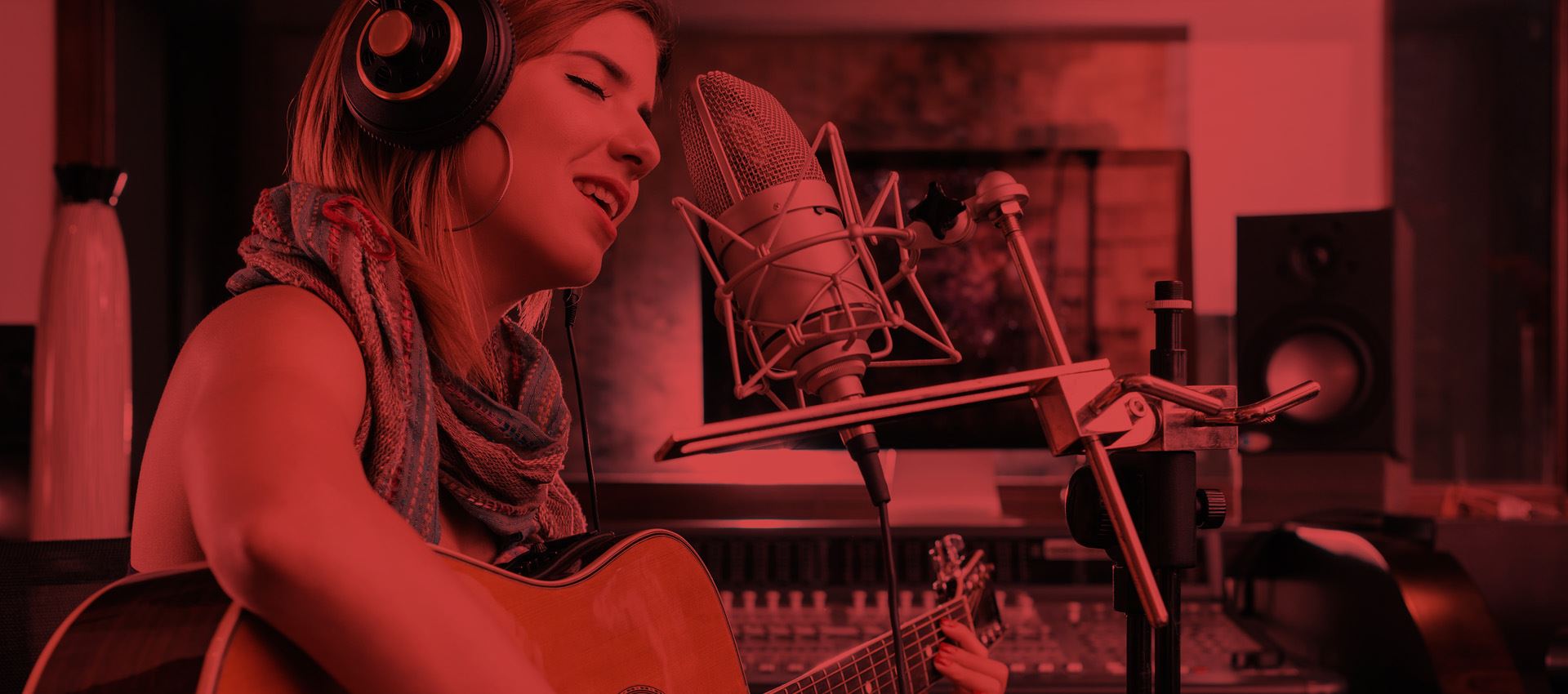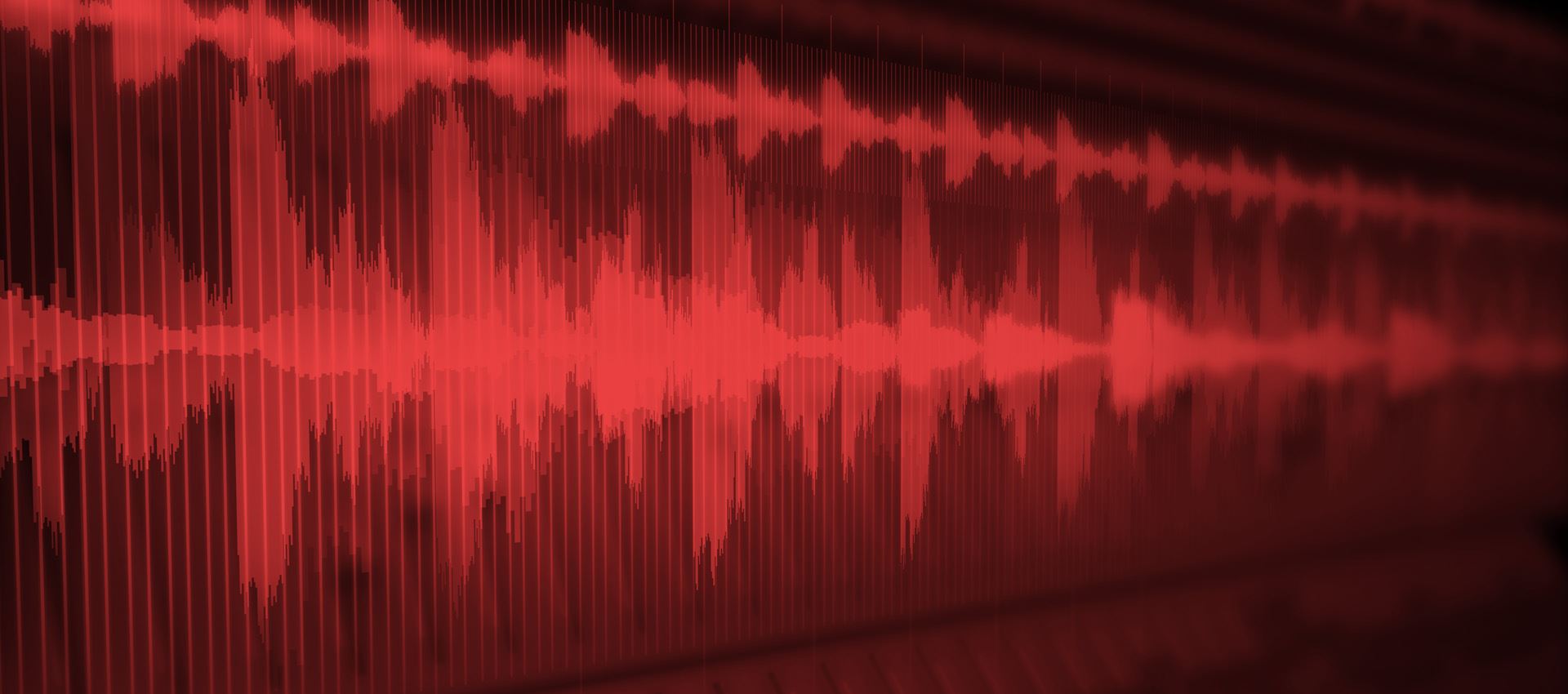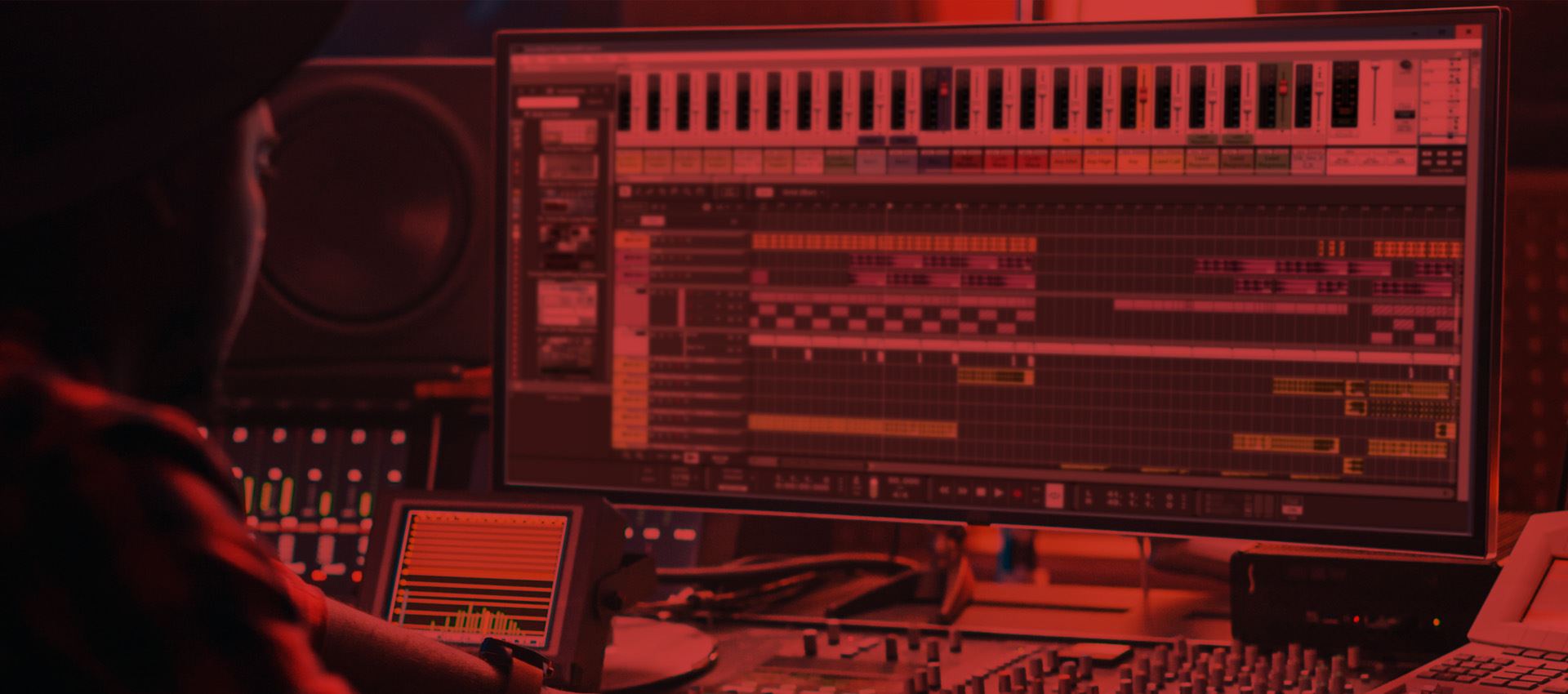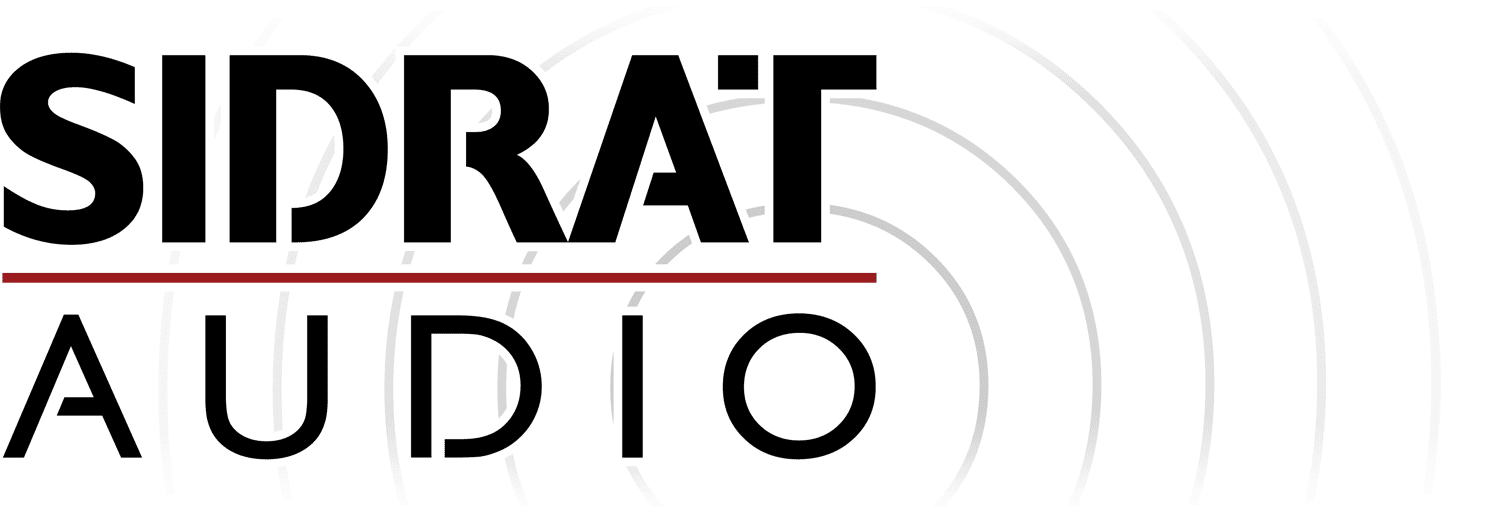Music Production
Depending on your particular needs, you may not require all of these services, but it’s worth spending a few minutes to gain an understanding of everything involved before proceeding with your music project.
Please feel free to get in touch if you have any questions or if you would like to discuss your project in further detail – I’ll be happy to help in any way I can.

Vocals:
As I specialise in music production for solo artists and duos, the majority of my recording work is focused on vocals and solo instruments. Something that may seem obvious, but which many studios overlook, is that every vocalist, whether they’re a singer, a rapper or a spoken word artist, has a unique voice.
Because of this, each vocalist will have their own needs when considering which microphone to use with which preamp, ideal headphone monitoring level as well as what kind of compression and EQ to apply during the recording and mixing process, all of which needs to be taken into account before moving on to recording their performance.
That’s why the soundcheck is so important to get right before diving straight in. My approach, when working with a new client, is to do a microphone shootout, which involves setting up a selection of mics, doing some test recordings, then listening back to choose the microphone that best serves the character of the artists voice, while also considering the needs of the track being recorded.
Ensuring the best possible tone is captured right from the start will make everything else go that much more smoothly throughout the rest of the production process.
Live Instruments:
The same is true when recording live instruments, whether they are acoustic or electric. By far the most common instrument I find myself recording in my work with solo artists and duos is, of course, guitar; primarily acoustic guitar with electric guitar coming in a close second, as well as electric bass guitar. I have my go to mics for these instruments, of course, as well as a range of placements and techniques for achieving different tones, which I’ll vary as needed for each application.
I also have plenty of experience in recording a wealth of other solo instruments, including violin, cello, double bass, flute, harp, sitar, saxophone and didgeridoo, as well as hand percussion, such as djembe, bongo, conga, tambourine, shakers, clave and tuned percussion, like xylophone, glockenspiel and many more, which I don’t have room to list and you probably don’t want to read through.
One more live instrument that is worth mentioning is the acoustic drum kit. This is a very challenging instrument to record properly, as it consists of several separate parts, all recorded together, often using multiple mics simultaneously, which complicates matters further. I won’t go into the technical details here, but if it’s not done properly, your recordings won’t sound professional, no matter what’s done in the mix. Luckily I have over 15-years of experience with recording live drums; I’ve made all the mistakes and have learnt from them.
The first thing I recommend is not to record live drums in my studio, due to its size. The Sidrat studio is perfectly suited to recording vocals and solo instruments, but a drum kit needs room to breathe. However, if you do need to record live drums, don’t worry; I’ve got to covered! I have a portable recording setup and all the necessary mics and cables to capture a live drum kit. All we need to do is book a suitable space to set everything up for a day’s session, such as a practice studio, church hall, etc. It can be quite an undertaking, but it’s well worth the effort.
Electronic Instruments:
Other types of instruments include electronic, such as hardware synthesizers and keyboards, samplers, sound modules, drum machines, etc. These can simply be plugged directly into the mixing desk or interface via a preamp and are relatively straightforward when it comes to recording, as they don’t require microphone.
MIDI Instruments:
Lastly, we have MIDI instruments, such as MIDI keyboards and pad controllers – even breath controllers. But these are just a control surface providing access to sounds inside the computer and that is something for which I can provide an almost limitless supply, with a vast array of virtual instruments from beautifully multi-sampled pianos, organs, drums, strings, brass, woodwind, percussion, ethnic and any other real-world instrument you can imagine. I also have a wide selection of immaculately modelled analogue and cutting-edge digital synthesizers and drum machines.
Nearly any sound can be stunningly reproduced and made available for you to perform and record. So, having decided what to record and the soundcheck completed, we’ll begin laying down your recordings.
Multiple Takes:
Whether we’re recording vocals to a hip-hop backing track or a classical guitar piece, we will likely need to do several takes before nailing it, no matter how well-practised you are. Obviously, if we get a perfect take on the first try, that’s fantastic! But don’t expect that to be the case; it’s standard procedure to record multiple takes – even with seasoned professionals.
FREE eBook:
I gift to all new clients my Ebook, ‘Recording your Demo: 15 Steps to SUCCESS’, which is designed to help you properly prepare for the recording and production process. It’s the perfect resource for artists who aren’t familiar with how things work in the studio, but it also offers a lot of useful information and action sheets for any musician, singer or rapper, even if they’re a seasoned recording artist. The eBook is packed with tips and advice from selecting the right song(s) to the moment you walk into the studio.
However, if you’re not quite ready to record just yet, you can still get your hands on a copy for just £5, which I’ll be happy to knock off the total of your quote when you’re ready to book your first session. Just click on the following button:

Comping:
In all likelihood, we will need to chop up a number of takes, selecting the very best performances from each passage, which we can then seamlessly edit together into a ‘comp’ that is as close to perfect as possible throughout the entire piece.
When editing audio, there are a lot of techniques one can apply to achieve the desired result. When ‘comping’, I mainly employ simple methods, like cutting at zero crossings and applying cross-fades.
Fixing:
The removal of unwanted background noises or de-breathing may require detailed editing, clip gain or the use of certain plugins, while timing issues may call for a different approach, such as shifting the audio earlier or later, or even time stretching.
EQ adjustment can enable us to match the tonal characteristics of one take to another, so that they run seamlessly from one to the next.
Pitch correction is another versatile editing tool that can be used transparently to fix unwanted fluctuations in pitch, often on vocals, so that you would never know there had ever been a problem to begin with.
Whatever’s needed, I have both the tools and the experience required to get the job done – and done properly!

Applications:
MIDI programming, digital composition – or sequencing, as I’ll refer to it hereafter – is the creation of music through the use of either a hardware sequencer or, much more commonly these days, a computer running a piece of software known as a DAW (Digital Audio Workstation).
I use a DAW to carry out all my recording and mixing, of course, but I also use one to create music by composing multiple channels of melodies, chords and rhythms in order to produce accompaniments for previously recorded live instruments and vocals, or to build entire backing tracks from scratch for artists to record and perform along with.
MIDI sequencing allows me to create music with an endless supply of sounds and instruments I would not have otherwise been able to access, building performances of full bands, ensembles, orchestras, synth soundscapes and more, all to a standard that would cost hundreds of thousands of pounds to achieve through traditional methods.
I have composed music across many genres; from classical to hip-hop, pop to electronica, indie rock to R&B, house to lo-fi chill, experimental to world music… Whatever you need to create I can probably turn my hand to it, as I have an eclectic taste in music, which spans many genres, as well as an open mind to anything I haven’t heard before.
Limitations:
Sequencing is both a skill and a creative art form. There are numerous applications for which sequencing is perfectly suited – however it does have its limits. For many real-world instruments it is an excellent tool, some for which it can provide a perfectly acceptable result, while for others it will be adequately realistic, as long as they are mixed in with other elements.
There are also some instruments whose nuances are a struggle to accurately reproduce through the use of sequencing. For example, acoustic guitar that exhibits anything more involved than simple strumming and straight picked notes.
It is possible to achieve a decent result with some added expression, but it is extremely time-consuming and is unlikely to be believable enough to stand up to close scrutiny in solo, or sometimes even when placed in a dense mix with other instruments. Many of the most versatile string instruments come into this category, such as solo violin, banjo, ukulele, etc.
Strengths:
However I have still achieved some great-sounding pieces for solo violins, violas and cellos, as long as the individual parts are not overly complex. I have also had some fantastic results with electric guitar and electric bass, again barring elaborate flourishes and extravagant solos, of course, as well as string, brass and woodwind sections, which lend themselves very well to sequencing, even with solo instruments, which are trickier, but perfectly doable.
Keyboard-based instruments such as piano, Rhodes, organ and clavinet, as well as pitched percussion, are an excellent medium for composition through sequencing, not to mention synthesizers and drum machines, many of which were actually made for it!
As you can see, the potential that sequencing offers is almost limitless, so if you have ever dreamed of having a set of professional musicians at your back, who never hit a wrong note, are always on time for practices and don’t get drunk at gigs, a sequenced accompaniment or full backing track may well be worth considering.
Please feel free to get in touch and I’ll be happy to walk you through the possibilities for your own projects.

What is Mixing?
The process of bringing together multiple channels of audio to create a blend of different sound sources is known as mixing. The essentials of mixing are balance and panning, which involve creating a harmonious relationship between each of the channels in regard to their volume levels and their position in the stereo field. However, as I’m sure you can imagine, there is a lot more to mixing than just that.
EQ (Equalisation):
EQ and filtering allows for the sculpting of each sound’s frequency range, affecting its tone by either reducing or increasing the level of specific frequencies from the sub-sonic bass to ultra-sonic high frequencies and anywhere in-between. These changes are best done with respect to the mix as a whole, in order to prevent masking, muddy build-up, harshness and a host of other tonal issues that may need to be dealt with, as well as bringing certain elements to the foreground or setting others further back.
EQ can also be used to fix problems such as exaggerated resonances, as well as tonal variances, while dynamic EQ can be applied for automatic correction of audio which exhibits intermittent tonal variations throughout a recording.
Compression:
Compression is most commonly used to control the dynamic range of a signal. Dynamic range is the difference in level between the loudest peaks and quietest troughs within the audio. A compressor is designed to react to the peaks, squashing them down by a specified amount, thereby reducing the dynamic range and allowing the overall level of the audio to be increased, without clipping.
That’s just one application of compression, which is far more versatile, and can also be used to exaggerate transients and add tonal variation as well as desirable distortion. When used in a side-chain, compression can also allow the signal of one channel to control the level of another, ducking it down when triggered, for instance enabling a kick drum to punch a hole through a dense mix, or for creating a signature pumping effect commonly found in dance music.
Compression is a remarkable and versatile tool, which also has a multitude of other applications, including de-essing, de-harshing and plosive control, all of which can be addressed through the use of different forms of multiband compression and many more uses besides.
Saturation:
A type of distortion, saturation is another key element of mixing, used to provide a certain flavour to a recording, with many varied types to choose from, including tape, valve and analogue circuitry, imparting a unique character on the audio, altering its tone as well as applying a different style of compression, which lends itself well to both gluing mix elements together and differentiating them from one another.
Reverb:
Reverb is another major part of mixing, offering a way to place mix elements in a variety of spaces and environments, from a small room to a concert hall, an oil tank to a football stadium. There are a ton of different types of reverb available, each suited for use on a range of sources, such spring reverbs, which sound great on guitars, plate reverbs, which often compliment vocals and impulse response algorithms that can emulate any real-world space imaginable.
Reverb is an excellent tool when used judiciously, for creating a believable acoustical environment for your musical elements to occupy, or for bringing into being unreal and unimaginable soundscapes, launching the listener on an otherworldly journey into sound.
Delay:
Delay, or artificial echoe, is another primary tool in the mix engineers arsenal, which can also be used to create ambience in a similar way to reverb, but with less of the swamping clutter reverb can create, leaving more space between it’s repeated echoes.
Delay is perhaps even more versatile than reverb, as it can also be used to produce other effects, such as chorus phasing and flanging, which are simply very fast delays combined with subtle variations in timing and/or pitch, creating unique results that serve to thicken the audio signal in various ways that are pleasing to the ear and allow those elements to which they are applied to stand out from other aspects of a mix.
Pitch Correction:
As previously mentioned, pitch correction is a common tool used to tighten up a wavering note. Alternatively, pitch correction can be used creatively, pushing it a lot harder to produce that iconic robotic style of vocal, brought to popular fame by artists such as Boys2Men, Cher and T-Pain, and is ubiquitous in modern R’n’B and UK hip-hop. Of course pitch correction isn’t limited to use on vocals, but can be used to great effect on live instruments, both subtly and in more extreme ways, opening up many creative possibilities.
Automation:
This is an invaluable tool provided by all modern DAWs, which allows the recording of parameter adjustments over time, including anything from volume faders and pan knobs to effect sends and filter frequency. Automation provides a means of changing the sound of your audio in an almost limitless number of ways throughout the duration of your track, including synthesizer parameters, such as filter cut-off, LFO speed, reverb decay time or for adding perfect delay throws.
The possibilities are immense and, as such, automation is a game-changer as far as music production is concerned. Almost anything imaginable can be achieved through the proper use of automation, making it one of the most important techniques employed in modern mixing.
Summary:
So, as you can probably tell, there’s a lot involved in the mixing process, from the purely technical to the highly creative, and it’s as much an essential part of music production as recording and editing, if not more so.
Of course, nothing is as important as the writing of the music in the first place. Music is, at its heart, a creative pursuit, and as I’ve already mentioned, mixing can be highly creative. In fact, once the technical aspects of mixing have been dealt with, creativity it the primary goal of any mix engineer.
It’s easy to become mired in the notion that every instrument in a mix needs to be audible throughout the track, but the key to a great mix is to follow the emotion, the groove and the feel of the music in order to take the listener on a sound journey.
The aim is to make the listener feel something, whether it’s sadness, joy or an urge to dance or nod their head, capturing that feeling in the music is what’s most important. If a certain instrument gets lost here or there, it doesn’t really matter, as long as they enjoy the experience in the most effective possible way.
Finally, it’s a common misconception that the last piece of the puzzle, when it comes to the music production process, known as mastering, is capable of fixing anything not addressed during mix-down. This is not the case. It is far better to fix any issues in the mix, so that the mastering engineer has as little to do as possible.
Mastering:


